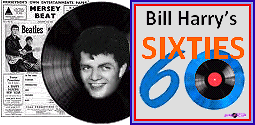They
were entertained by a host of new bands who created what was to become known
as the ‘West Coast Sound’ and included the Grateful Dead, Jefferson Airplane
and Quicksilver Messenger Service. It was a celebration of Love and Peace
and also a protest against the escalating war in Vietnam.
West Coast rock seemed to flourish throughout the year, with further San
Francisco-based bands such as Country Joe & The Fish and Big Brother & The
Holding Company, with singer Janis Joplin, appearing at the biggest outdoor
festival of 1967 – the Monterey Pop Festival in June.
The word 'hippie' was a term derived from the jazz form ‘hip’ – to be aware
of what’s going on. They comprised mainly white middle-class youngsters
in their teens and early twenties, who rejected the ‘rat race’ and quest
for material gain. They dressed in colourful clothes, wore their hair long,
were pacifistic by nature and loved dancing and rock music.
They were part of a drug culture who believed that marijuana was less harmful
than alcohol. They also took LSD, although they rejected hard drugs such
as heroin. The hippies were also known as 'flower children'. Their spiritual
home was a district at the intersection of Haight and Ashbury Streets, which
was the centre of their counter culture lifestyle. |
|
Monterey Pop Festival 1967
Friday 16th June
The Association, The Paupers, Lou Rawls, Beverly,
Johnny Rivers, The Animals, Simon and Garfunkel
Saturday 17th June
Canned Heat, Big Brother & The Holding Company,
Country Joe & The Fish, Al Kooper, The Butterfield Blues Band, Quicksilver
Messenger Service, Steve Miller Band,
The Electric Flag, Moby Grape, Hugh Masekela, The Byrds,
Laura Nyro, Jefferson Airplane,
Booker T and The MG's, Otis Redding
Sunday 18th June
Ravi Shankar, The Blues Project,
Big Brother & The Holding Company, The Group With No Name, Buffalo Springfield,
The Who, The Grateful Dead,
The Jimi Hendrix Experience, Scott Mackenzie,
The Mamas & The Papas
|









